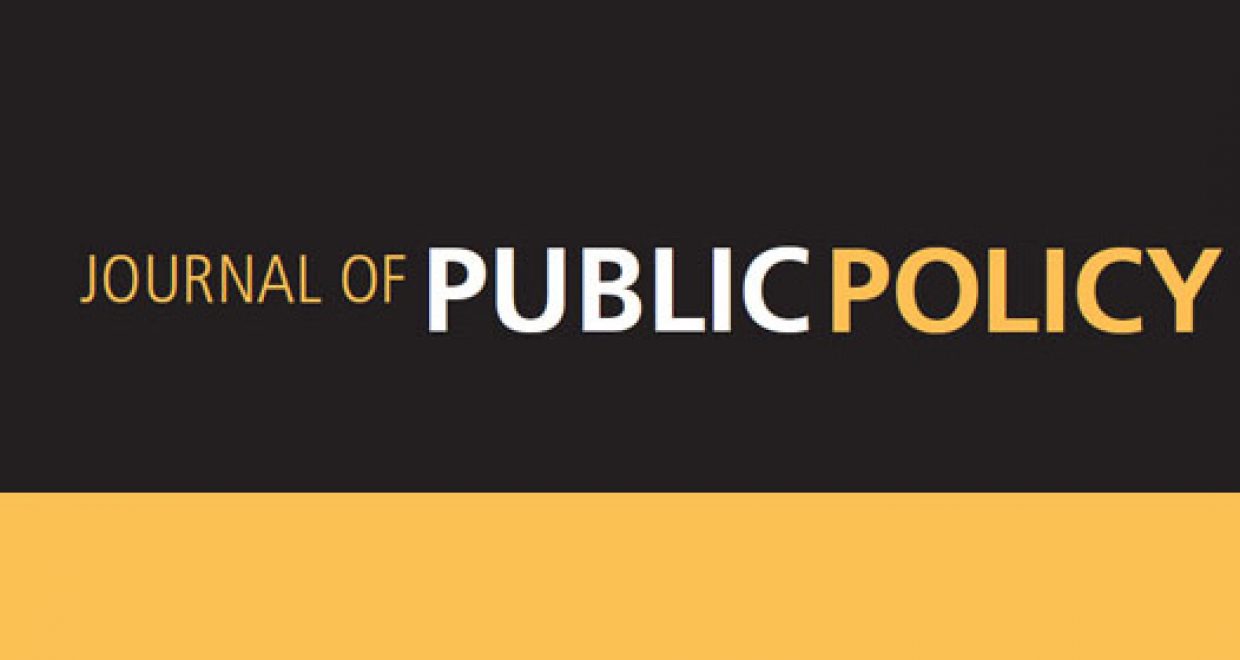Aviation Policy Instrument choice in Europe – High Flying and Crash Landing? Understanding Policy Evolutions in the Netherlands and Germany
In the Paris agreement, countries have committed themselves to decrease their carbon emissions drastically. Against this background, aviation has become an emblematic bone of contention since it is proven to be the most polluting mode of transport. At the same time, global aviation traffic is deemed essential for global interactions and trade and it has continuously grown in the years until 2020. While the number of flights has decreased in the COVID-19-pandemic, the sector is expected to return to its growth trajectory after the pandemic. As this growth regularly entails a substantial increase of emissions, the regulation of aviation transport is a matter that is discussed widely in the context of combatting climate change and, in this vein, has also been taken up by national policy-makers. However, national handling of aviation regulation shows a remarkable variance across countries.
In our study in the Journal of Public Policy, we focused the adoption of a specific policy instrument to regulate the aviation sector, i.e., ticket taxes, in the Netherlands and Germany as these two countries differ substantially in their handling of aviation regulation and, thus, represent potential variances in that matter well. The Netherlands took a policy round trip and ultimately looped the loop as it has introduced such a tax (2008-09), abolished it (2010-11) and reintroduced it on a considerably lower level (2017-2020). In contrast, Germany stayed the course: it has introduced an almost identical tax (2010-11), kept it and most recently even raised it to a comparatively high level (2017-2020). Given the basic similarities of the countries, these diverging policy evolutions present a puzzle. For us as political scientists, it has been most interesting to trace the factors accounting for variations in national political handling of aviation transport. For this purpose, we followed research on instrument choice in environmental policy and apply the heuristics of the Political Process-inherent Dynamics Approach (PIDA) by Böcher and Töller.
Our analysis reveals three decisive factors that together sketch out general characteristics of aviation transport regulation and provide a reasonable explanation to the above-mentioned puzzle: 1. institutions, 2. problem structure, and 3. party competition. Fundamentally, it is evident, that instrument choice with the objective of regulating transport volume in the aviation sector is strongly shaped by institutional factors that constrain the number of instruments available. Here, the Chicago Convention on Civil Aviation from 1944 is still central. It established rules for civil aviation that are binding under international law to facilitate the international exchange of people in peacetime and to boost air traffic. Nowadays, thus, it makes it hard for policy-makers to introduce political instruments aimed at restricting air traffic in order to reduce CO2-emissions. This, however, applies to both countries equally, so that we need to consider other factors. Regarding the problem structure, strikingly, the same policy was applied to address different problems. Whereas the Netherlands first introduced the tax for environmental reasons two times and abolished it out of economic considerations, Germany introduced the tax for tax revenue only in the first place and first for the raise of the tax, more recently, the government put forward environmental reasons. Hence, in the course of time we may conclude an increasing meaning of environmental motivations although these motivations still have to be embedded in economic reasoning. The considerable raise of the German aviation tax in 2019 has only been possible as it continues the path of an economically driven policy and the reintroduction of the ticket taxin the Netherlands has evidently been shaped by economically derived constraints and previous experiences. In policy analysis this is referred to as path dependency. Not least, different configurations of party competition have played a pivotal role pointing to the importance of both government and opposition parties. From the beginning, the Dutch government was confronted with a quite strong opposition against the tax by the liberal People’s Party for Freedom and Democracy (VVD) and the right-wing populist Party for Freedom (PVV) which helped to keep the topic up on the political agenda both inside and outside the parliament and benefited the formation of protests. In the German case such a parliamentary opposition was missing completely since all three left opposition parties programmatically consented to the tax and the Liberals which were the only ones openly opposing the aviation tax, first were part of the government which introduced the tax in the first place and afterwards were voted out the Bundestag struggling against political insignificance. Looking at the governmental parties, the durability of the aviation tax in Germany can also be connected to the Nixon-goes-to-China-argument. The fact, that in particular the traditionally business-friendly Christian Democrats advocated the tax, has made it extraordinary difficult for lobby organisations to exert any influence on the government. The same holds true for the reintroduction of the tax in the Netherlands in 2021. If a government under a VVD-prime minister, who personally had fiercely opposed the tax in the past, now takes such a step, the policy seems almost inevitable.
Finally, our comparative case study contributes to the broader research on sustainable transitions as aviation transport, in particular, can be understood as an increasingly symbolic area for this pointing to questions like to which extent and for what reasons the state enforces environmentally-oriented regulation. From our analysis, explanations do not indicate any extensive turnaround in the ongoing priority struggle between environmental and economic considerations, while they underline that policy-making, in general, is by no means always problem-solving-oriented, but follows other rationalities.
– Lars E. Berker, Otto-von-Guericke University Magdeburg
– Michael Böcher, Otto-von-Guericke University Magdeburg
Berker and Böcher’s article is published as Open Access in the Journal of Public Policy.





